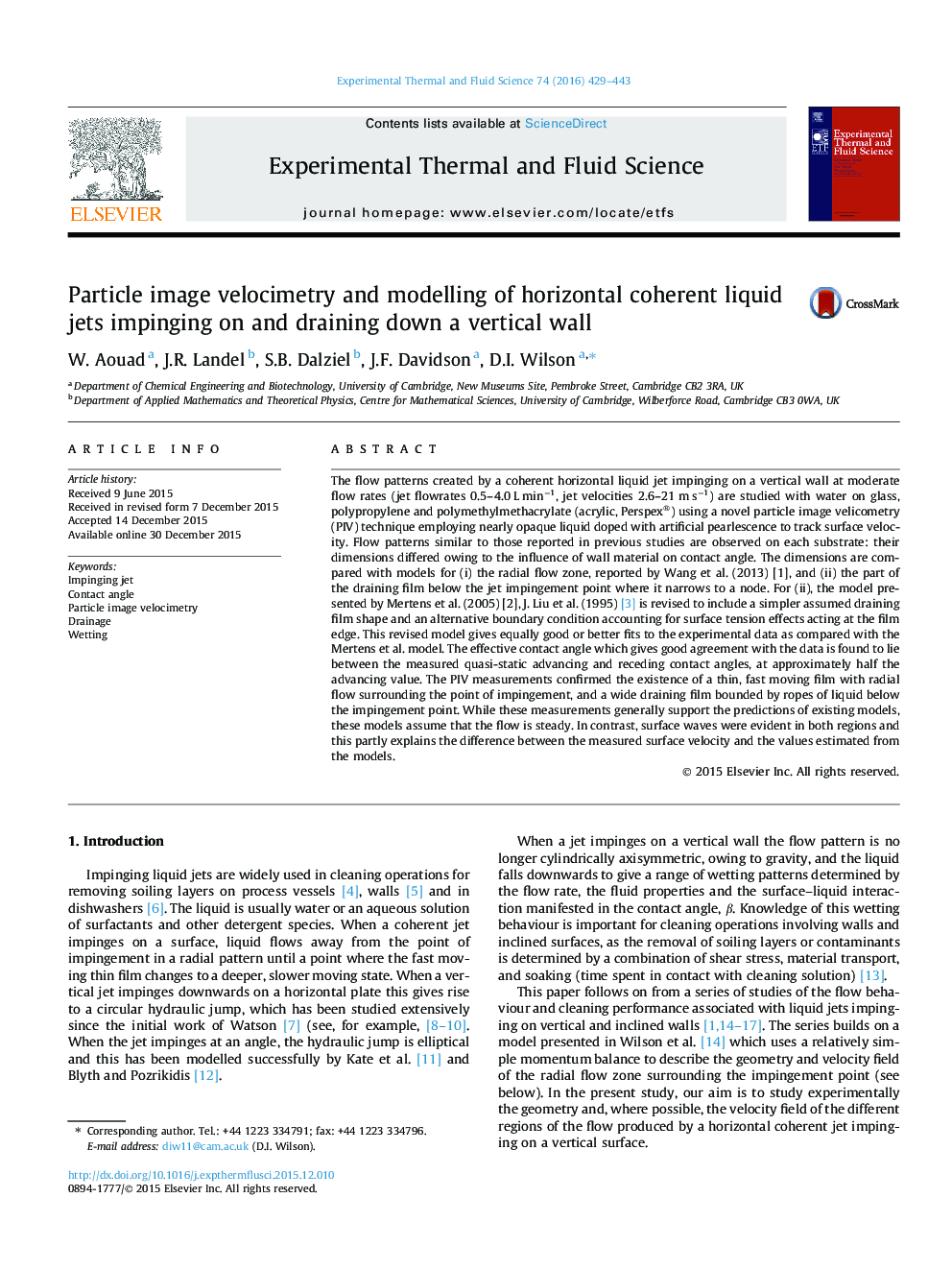| کد مقاله | کد نشریه | سال انتشار | مقاله انگلیسی | نسخه تمام متن |
|---|---|---|---|---|
| 651216 | 1457402 | 2016 | 15 صفحه PDF | دانلود رایگان |
• Substrate nature affects the dimensions of the wetted regions and flow behaviour.
• Surface velocity in the radial flow zone and falling film measured using PIV technique.
• Liquid spreading upwards forms ropes of liquid bounding the falling film.
• Dimensions of wetted region on 3 substrates predicted reasonably well by models.
• Narrowing of falling film region modelled by modified Mertens et al. [2] model.
The flow patterns created by a coherent horizontal liquid jet impinging on a vertical wall at moderate flow rates (jet flowrates 0.5–4.0 L min−1, jet velocities 2.6–21 m s−1) are studied with water on glass, polypropylene and polymethylmethacrylate (acrylic, Perspex®) using a novel particle image velicometry (PIV) technique employing nearly opaque liquid doped with artificial pearlescence to track surface velocity. Flow patterns similar to those reported in previous studies are observed on each substrate: their dimensions differed owing to the influence of wall material on contact angle. The dimensions are compared with models for (i) the radial flow zone, reported by Wang et al. (2013) [1], and (ii) the part of the draining film below the jet impingement point where it narrows to a node. For (ii), the model presented by Mertens et al. (2005) [2], J. Liu et al. (1995) [3] is revised to include a simpler assumed draining film shape and an alternative boundary condition accounting for surface tension effects acting at the film edge. This revised model gives equally good or better fits to the experimental data as compared with the Mertens et al. model. The effective contact angle which gives good agreement with the data is found to lie between the measured quasi-static advancing and receding contact angles, at approximately half the advancing value. The PIV measurements confirmed the existence of a thin, fast moving film with radial flow surrounding the point of impingement, and a wide draining film bounded by ropes of liquid below the impingement point. While these measurements generally support the predictions of existing models, these models assume that the flow is steady. In contrast, surface waves were evident in both regions and this partly explains the difference between the measured surface velocity and the values estimated from the models.
Figure optionsDownload as PowerPoint slide
Journal: Experimental Thermal and Fluid Science - Volume 74, June 2016, Pages 429–443
